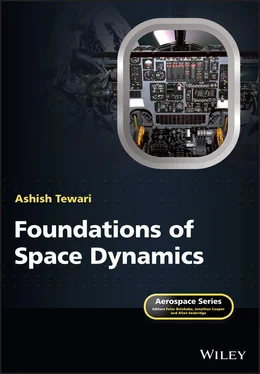1 ...6 7 8 10 11 12 ...25 Since Julian day numbers with the epoch  can become very large, it is often convenient to use a later epoch for computing
can become very large, it is often convenient to use a later epoch for computing  . Epochs can be chosen with simpler
. Epochs can be chosen with simpler  figures, such as 12:00 hr. UT on November 16, 1858, which has
figures, such as 12:00 hr. UT on November 16, 1858, which has  . Then Julian dates can be converted to this epoch by replacing
. Then Julian dates can be converted to this epoch by replacing  with
with  . For example, the Julian date for 09:25 a.m. UT, June 25, 1975, converted to the epoch of Nov. 16, 1858, is
. For example, the Julian date for 09:25 a.m. UT, June 25, 1975, converted to the epoch of Nov. 16, 1858, is  . For the consistency of data, all modern astronomical calculations are reduced to the epoch,
. For the consistency of data, all modern astronomical calculations are reduced to the epoch,  , by international agreement. This means that all the Julian dates must be converted to this epoch by replacing
, by international agreement. This means that all the Julian dates must be converted to this epoch by replacing  with
with  .
.
1.3 Classification of Space Missions
Spacecraft are classified according to their missions. A large majority of spacecraft orbit Earth as artificial satellites for observation, mapping, thermal and radio imaging, navigation, scientific experimentation, and telecommunications purposes. These satellites are classified according to the shapes and sizes of their orbits. A spacecraft orbiting a central body at altitudes smaller than the mean radius,  , of the body,
, of the body,  , is termed a low‐orbiting spacecraft . Examples of such spacecraft for Earth (
, is termed a low‐orbiting spacecraft . Examples of such spacecraft for Earth (  km) are the low‐Earth orbit (LEO) satellites, which orbit the planet in nearly circular orbits of
km) are the low‐Earth orbit (LEO) satellites, which orbit the planet in nearly circular orbits of  km. Orbital periods of LEO satellites range from 90 to 127 min., and are mainly used for Earth observation, photo reconnaissance, resource mapping, and special sensing and scientific missions. The International Space Station is a manned LEO spacecraft with a nearly circular orbit of mean altitude,
km. Orbital periods of LEO satellites range from 90 to 127 min., and are mainly used for Earth observation, photo reconnaissance, resource mapping, and special sensing and scientific missions. The International Space Station is a manned LEO spacecraft with a nearly circular orbit of mean altitude,  km. There are hundreds of active LEO satellites in orbit at any given time, launched by various nations for civil and military applications.
km. There are hundreds of active LEO satellites in orbit at any given time, launched by various nations for civil and military applications.
A medium‐Earth orbit (MEO) satellite has a period of about 12 hours. Examples of such spacecraft are the Global Positioning System (GPS) navigational satellites in circular orbits of altitudes about 20,000 km, and Molniya telecommunications satellites of Russia in highly eccentric elliptical orbits inclined at  relative to Earth's equatorial plane.
relative to Earth's equatorial plane.
The highest altitude of Earth satellites is for those in the geosynchronous equatorial orbit (GEO), which is a circular orbit in the equatorial plane of a period exactly matching a sidereal day, i.e., 23 hr., 56 min., 4.0904 s. This translates into an altitude of  km. Since the orbital frequency of a GEO satellite equals the rate of rotation of Earth on its axis, such a satellite returns to the same point above the equator after each sidereal day, thereby appearing to be stationary to an observer on the ground. Hence, a GEO satellite is used as a telecommunications relay platform for signals between any two ground stations directly in the line of sight of the satellite. Due to the high altitude of the GEO satellite, a broad coverage of signals is provided to the receiving stations on the ground, and is the basis of modern television broadcasts and mobile telephone communications.
km. Since the orbital frequency of a GEO satellite equals the rate of rotation of Earth on its axis, such a satellite returns to the same point above the equator after each sidereal day, thereby appearing to be stationary to an observer on the ground. Hence, a GEO satellite is used as a telecommunications relay platform for signals between any two ground stations directly in the line of sight of the satellite. Due to the high altitude of the GEO satellite, a broad coverage of signals is provided to the receiving stations on the ground, and is the basis of modern television broadcasts and mobile telephone communications.
A small number of spacecraft are put into highly specialized lunar, interplanetary, and asteroid/cometary intercept orbits for the exploration of the solar system. Due to the typically large distances involved in their missions, which might include the time spent beyond the line‐of‐sight of Earth, such spacecraft must be fully autonomous in terms of their basic operations. The spacecraft which are sent to explore the outer planets (such as NASA's Voyager 1 and Voyager 2 , Cassini , Galileo , and New Horizons ) must also have an onboard electrical power source for charging their batteries, due to the unavailability of effective solar power (the sun is too dim at such large distances).
1 Using the following exponential atmosphere model for Earth with the scale height, km, and base density, , calculate the atmospheric density at the altitude, km:Compare the result with that given in Table 1.1.
2 Calculate the Julian date for 3:30 p.m. UT on October 15, 2007, referring to the epoch.
3 What is the exact time difference between two events happening at 11:05 a.m. on July 28, 1993, and 8:31 p.m. on November 3, 2005, respectively?
1 Tewari A 2006. Atmospheric and Space Flight Dynamics. Birkhäuser, Boston.
2 Seidelmann KP (ed.) 1992. Explanatory Supplement to the Astronomical Almanac. University Science Books, Sausalito, CA.
1 1An epoch is a moment in time used as a reference point for a time‐varying astronomical quantity, such as the orbital elements specifying the shape and the plane of an orbit, the direction of the spin axis of a body, the coordinates of important celestial objects, etc.
Dynamics is the study of an object in motion, and pertains to a change in the position and orientation of the object as a function of time. This chapter introduces the basic principles of dynamics, which are later applied to the motion of a vehicle in the space.
The vectors and matrices are denoted throughout this book in boldface, whereas scalar quantities are indicated in normal font. The elements of each vector are arranged in a column. The Euclidean norm (or magnitude ) of a three‐dimensional vector,  , is denoted as follows:
, is denoted as follows:
Читать дальше

 can become very large, it is often convenient to use a later epoch for computing
can become very large, it is often convenient to use a later epoch for computing  . Epochs can be chosen with simpler
. Epochs can be chosen with simpler  figures, such as 12:00 hr. UT on November 16, 1858, which has
figures, such as 12:00 hr. UT on November 16, 1858, which has  . Then Julian dates can be converted to this epoch by replacing
. Then Julian dates can be converted to this epoch by replacing  with
with  . For example, the Julian date for 09:25 a.m. UT, June 25, 1975, converted to the epoch of Nov. 16, 1858, is
. For example, the Julian date for 09:25 a.m. UT, June 25, 1975, converted to the epoch of Nov. 16, 1858, is  . For the consistency of data, all modern astronomical calculations are reduced to the epoch,
. For the consistency of data, all modern astronomical calculations are reduced to the epoch,  , by international agreement. This means that all the Julian dates must be converted to this epoch by replacing
, by international agreement. This means that all the Julian dates must be converted to this epoch by replacing  with
with  .
. , of the body,
, of the body,  , is termed a low‐orbiting spacecraft . Examples of such spacecraft for Earth (
, is termed a low‐orbiting spacecraft . Examples of such spacecraft for Earth (  km) are the low‐Earth orbit (LEO) satellites, which orbit the planet in nearly circular orbits of
km) are the low‐Earth orbit (LEO) satellites, which orbit the planet in nearly circular orbits of  km. Orbital periods of LEO satellites range from 90 to 127 min., and are mainly used for Earth observation, photo reconnaissance, resource mapping, and special sensing and scientific missions. The International Space Station is a manned LEO spacecraft with a nearly circular orbit of mean altitude,
km. Orbital periods of LEO satellites range from 90 to 127 min., and are mainly used for Earth observation, photo reconnaissance, resource mapping, and special sensing and scientific missions. The International Space Station is a manned LEO spacecraft with a nearly circular orbit of mean altitude,  km. There are hundreds of active LEO satellites in orbit at any given time, launched by various nations for civil and military applications.
km. There are hundreds of active LEO satellites in orbit at any given time, launched by various nations for civil and military applications. relative to Earth's equatorial plane.
relative to Earth's equatorial plane. km. Since the orbital frequency of a GEO satellite equals the rate of rotation of Earth on its axis, such a satellite returns to the same point above the equator after each sidereal day, thereby appearing to be stationary to an observer on the ground. Hence, a GEO satellite is used as a telecommunications relay platform for signals between any two ground stations directly in the line of sight of the satellite. Due to the high altitude of the GEO satellite, a broad coverage of signals is provided to the receiving stations on the ground, and is the basis of modern television broadcasts and mobile telephone communications.
km. Since the orbital frequency of a GEO satellite equals the rate of rotation of Earth on its axis, such a satellite returns to the same point above the equator after each sidereal day, thereby appearing to be stationary to an observer on the ground. Hence, a GEO satellite is used as a telecommunications relay platform for signals between any two ground stations directly in the line of sight of the satellite. Due to the high altitude of the GEO satellite, a broad coverage of signals is provided to the receiving stations on the ground, and is the basis of modern television broadcasts and mobile telephone communications. , is denoted as follows:
, is denoted as follows:










